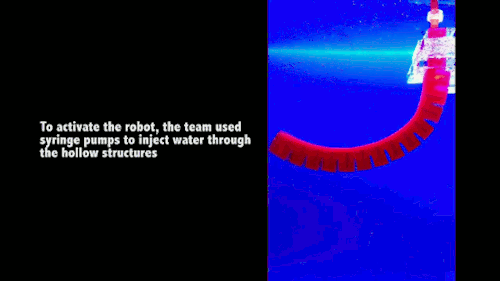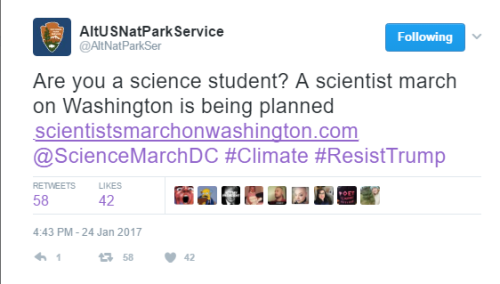Smparticle2 - Untitled










More Posts from Smparticle2 and Others

Researchers identify method of creating long-lasting memories
Imagine if playing a new video game or riding a rollercoaster could help you prepare for an exam or remember other critical information.
A new study in mice shows this link may be possible.
Attention-grabbing experiences trigger the release of memory-enhancing chemicals. Those chemicals can etch memories into the brain that occur just before or soon after the experience, regardless of whether they were related to the event, according to researchers at UT Southwestern Medical Center’s Peter O’Donnell Jr. Brain Institute.
The findings, published in Nature, hold intriguing implications for methods of learning in classrooms as well as an array of potential uses in the workplace and personal life, researchers said.
The trick to creating long-lasting memories is to find something interesting enough to activate the release of dopamine from the brain’s locus coeruleus (LC) region.
“Activation of the locus coeruleus increases our memory of events that happen at the time of activation and may also increase the recall of those memories at a later time,” said Dr. Robert Greene, the study’s co-senior author and a Professor of Psychiatry and Neurosciences with the O’Donnell Brain Institute.
The study explains at the molecular level why people tend to remember certain events in their lives with particular clarity as well as unrelated details surrounding those events: for instance, what they were doing in the hours before the Sept. 11, 2001, terrorist attacks; or where they were when John F. Kennedy was assassinated.
“The degree to which these memories are enhanced probably has to do with the degree of activation of the LC,” said Dr. Greene, holder of the Sherry Gold Knopf Crasilneck Distinguished Chair in Psychiatry, in Honor of Mollie and Murray Gold, and the Sherry Knopf Crasilneck Distinguished Chair in Psychiatry, in Honor of Albert Knopf. “When the New York World Trade Center came down on 9/11, that was high activation.”
But life-changing events aren’t the only way to trigger the release of dopamine in this part of the brain. It could be as simple as a student playing a new video game during a quick break while studying for a crucial exam, or a company executive playing tennis right after trying to memorize a big speech.
“In general, anything that will grab your attention in a persistent kind of way can lead to activation,” Dr. Greene said.
Scientists have known dopamine plays a large role in memory enhancement, though where the chemical originates and how it’s triggered have been points of study over the years.
Dr. Greene led a study published in 2012 that identified the locus coeruleus as a third key source for dopamine in the brain, besides the ventral tegmental area and the substantia nigra. That research demonstrated the drug amphetamine could pharmacologically trigger the brain’s release of dopamine from the LC.
The latest study builds upon those findings, establishing that dopamine in this area of the brain can be naturally activated through behavioral actions and that these actions enhance memory retention.
The new study suggests that drugs targeting neurons in the locus coeruleus may affect learning and memory as well. The LC is located in the brain stem and has a range of functions that affect a person’s emotions, anxiety levels, sleep patterns, memory and other aspects of behavior.
The study tested 120 mice to establish a link between locus coeruleus neurons and neuronal circuits of the hippocampus – the region of the brain responsible for recording memories – that receive dopamine from the LC.
One part of the research involved putting the mice in an arena to search for food hidden in sand that changed location each day. The study found that mice that were given a “novel experience” – exploring an unfamiliar floor surface 30 minutes after being trained to remember the food location – did better in remembering where to find the food the next day.
Researchers correlated this memory enhancement to a molecular process in the brain by injecting the mice with a genetically encoded light-sensitive activator called channelrhodopsin. This sensor allowed them to selectively activate dopamine-carrying neurons of the locus coeruleus that go to the hippocampus and to see first-hand which neurons were responsible for the memory enhancement.
They found that selectively activating the channelrhodopsin-labeled neurons with blue light (a technique called optogenetics) could substitute for the novelty experience as a memory enhancer in mice. They also found that this activation could cause a direct, long-lasting synaptic strengthening – an enhancement of memory-relevant communication occurring at the junctions between neurons in the hippocampus. This process can mediate improvement of learning and memory.
Some next steps include investigating how big an impact this finding can have on human learning, whether it can eventually lead to an understanding of how patients can develop failing memories, and how to better target effective therapies for these patients, said Dr. Greene.








The U.S. Women’s Team win gold at the 2014 Nanning World Championships



A research group at MIT has created a new class of fast-acting, soft robots from hydrogels. The robots are activated by pumping water in or out of hollow, interlocking chambers; depending on the configuration, this can curl or stretch parts of the robot. The hydrogel bots can move quickly enough to catch and release a live fish without harming it. (Which is a feat of speed I can’t even manage.) Because hydrogels are polymer gels consisting primarily of water, the robots could be especially helpful in biomedical applications, where their components may be less likely to be rejected by the body. For more, see MIT News or the original paper. (Image credit: H. Yuk/MIT News, source; research credit: H. Yuk et al.)





GUYS https://twitter.com/AltNatParkSer/status/824054953404669953 http://www.scientistsmarchonwashington.com/ THE NATIONAL PARK SERVICE IS IN OPEN REBELLION

How do you build a metal nanoparticle?
Novel theory explains how metal nanoparticles form
Although scientists have for decades been able to synthesize nanoparticles in the lab, the process is mostly trial and error, and how the formation actually takes place is obscure. However, a study recently published in Nature Communications by chemical engineers at the University of Pittsburgh’s Swanson School of Engineering explains how metal nanoparticles form.
“Thermodynamic Stability of Ligand-Protected Metal Nanoclusters” (DOI: 10.1038/ncomms15988) was co-authored by Giannis Mpourmpakis, assistant professor of chemical and petroleum engineering, and PhD candidate Michael G. Taylor. The research, completed in Mpourmpakis’ Computer-Aided Nano and Energy Lab (C.A.N.E.LA.), is funded through a National Science Foundation CAREER award and bridges previous research focused on designing nanoparticles for catalytic applications.
“Even though there is extensive research into metal nanoparticle synthesis, there really isn’t a rational explanation why a nanoparticle is formed,” Dr. Mpourmpakis said. “We wanted to investigate not just the catalytic applications of nanoparticles, but to make a step further and understand nanoparticle stability and formation. This new thermodynamic stability theory explains why ligand-protected metal nanoclusters are stabilized at specific sizes.”
Read more.

Engineers build world’s lightest mechanical watch thanks to graphene
An ultralight high-performance mechanical watch made with graphene is unveiled today in Geneva at the Salon International De La Haute Horlogerie thanks to a unique collaboration.
The University of Manchester has collaborated with watchmaking brand Richard Mille and McLaren F1 to create world’s lightest mechanical chronograph by pairing leading graphene research with precision engineering.
The RM 50-03 watch was made using a unique composite incorporating graphene to manufacture a strong but lightweight new case to house the delicate watch mechanism. The graphene composite known as Graph TPT weighs less than previous similar materials used in watchmaking.
Graphene is the world’s first two-dimensional material at just one-atom thick. It was first isolated at The University of Manchester in 2004 and has the potential to revolutionise a large number of applications including, high-performance composites for the automotive and aerospace industries, as well as flexible, bendable mobile phones and tablets and next-generation energy storage.
Read more.

14-year-old Richard Pierce, Western Union messenger, works from 7 a.m. to 6 p.m, Delaware, 1910
via reddit

Hold a buoyant sphere like a ping pong ball underwater and let it go, and you’ll find that the ball pops up out of the water. Intuitively, you would think that letting the ball go from a lower depth would make it pop up higher – after all, it has a greater distance to accelerate over, right? But it turns out that the highest jumps comes from balls that rise the shortest distance. When released at greater depths, the buoyant sphere follows a path that swerves from side to side. This oscillating path is the result of vortices being shed off the ball, first on one side and then the other. (Image and research credit: T. Truscott et al.)
Dutch trains now all powered by wind energy

All Dutch trains have become 100% powered by electricity generated by wind energy, the national railway company NS has said, making it a world’s first.
One windmill running for an hour can power a train for 120 miles, the companies said. Dutch electricity company Eneco won a tender offered by NS two years ago and the two companies signed a 10-year deal setting January 2018 as the date by which all NS trains should run on wind energy. ‘We in fact reached our goal a year earlier than planned,” said NS spokesman Ton Boon, adding that an increase in the number of wind farms across the country and off the coast of the Netherlands had helped NS achieve its aim.
They hope to reduce the energy used per passenger by a further 35% by 2020 compared with 2005.
-
 slobozan-shitposting liked this · 6 years ago
slobozan-shitposting liked this · 6 years ago -
 goblinhomo reblogged this · 6 years ago
goblinhomo reblogged this · 6 years ago -
 snottly liked this · 6 years ago
snottly liked this · 6 years ago -
 shitheadsthings liked this · 6 years ago
shitheadsthings liked this · 6 years ago -
 icanbeyourpizzamancas liked this · 6 years ago
icanbeyourpizzamancas liked this · 6 years ago -
 ir-o-ny liked this · 6 years ago
ir-o-ny liked this · 6 years ago -
 smolgay11 liked this · 6 years ago
smolgay11 liked this · 6 years ago -
 kelsh13 liked this · 6 years ago
kelsh13 liked this · 6 years ago -
 literallyanythi liked this · 6 years ago
literallyanythi liked this · 6 years ago -
 pavlovs-nikola liked this · 6 years ago
pavlovs-nikola liked this · 6 years ago -
 ask-strangelyvic liked this · 6 years ago
ask-strangelyvic liked this · 6 years ago -
 veelock liked this · 6 years ago
veelock liked this · 6 years ago -
 allezsonbecker liked this · 6 years ago
allezsonbecker liked this · 6 years ago -
 squigglepufflavaice liked this · 6 years ago
squigglepufflavaice liked this · 6 years ago